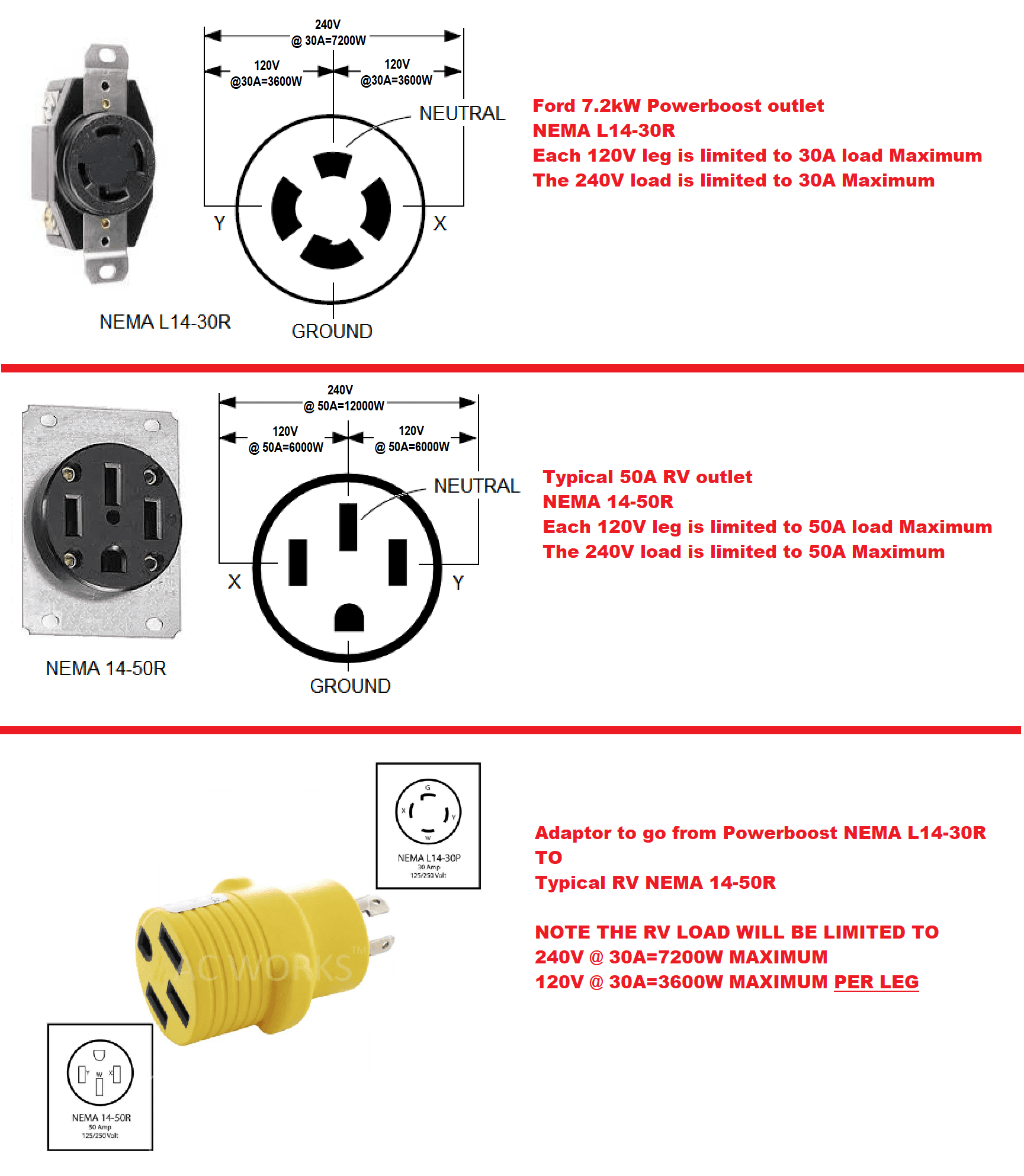STJonesin4
Active member
- First Name
- Steve
- Joined
- Nov 6, 2021
- Threads
- 0
- Messages
- 25
- Reaction score
- 5
- Location
- Street, MD
- Vehicles
- 2022 Ford F150 King Ranch
- Occupation
- Construction
This is a great answer. (From an electrician).If you have an RV with the typical 50A RV shore-power cord/plug, you can connect that to your 7.2kW Powerboost using this single simple adaptor.
BUT there's nothing you can do to increase the total load capacity of the 7.2kW Powerboost. Therefore, when using such an adaptor, you will be limited to 30A load (3600W) on each 120V leg of the electrical system in the RV (and/or 30A load (7200W) on the 240v circuit IF your RV actually has any 240V appliances).
IF you exceed an actual load of 30A on either 120V leg in your RV, or a total of 7200W between all 120V legs and any 240V circuit, the protective devices on the Powerboost should 'trip' to protect the vehicle systems.
The distribution of loads in your RV between the 120V legs is determined by the wiring system in each RV and may vary. It may be possible that one could 'trip' one leg of 120V power but not the other if only one leg is overloaded (exceeds the 30A/3600W Maximum).
You can butcher your Powerboost to try and replace your OE NEMA L14-30R outlet with a NEMA 15-50R outlet; you can try all sorts of shenanigans with 'wye' cords plugged into multiples of the Powerboost outlets; but nothing will allow it to deliver more than it's rated 30A/7.2kW Maximum load (120V plus 240V aggregate); no matter what, you will have to manage your actual RV load demands to stay within those limits.

Sponsored


